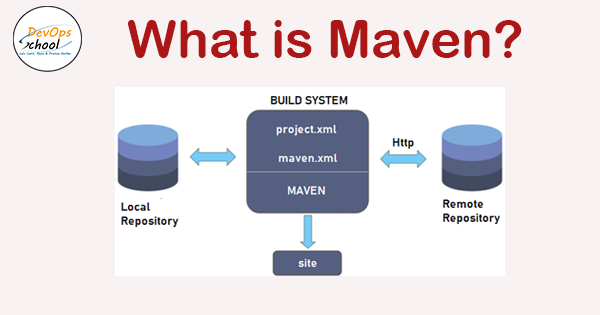
What is Maven?
Maven is a popular open-source build tool developed by the Apache Group to build, publish, and deploy several projects at once for better project management. It has a similar development process as ANT, but it is more advanced than ANT. Maven takes care of processes like releases, distribution, reporting, builds, documentation, and SCMs. Maven connects to the Maven Central repository and loads them in local.
How Maven works architecture?
- Check java Environmental variable is set or not. if not then set java environmental variable.(link to install java and setting environmental variable)
- Download maven (Link)
- Unpack your maven zip at any place in your system.
Add the bin directory of the created directory apache-maven-3.5.3(it depends upon your installation version) to the PATH environment variable and system variable.
open cmd and run mvn -v command. If it print following lines of code then installation completed.

Use case of Maven
- Maven can add all the dependencies required for the project automatically by reading pom file.
- One can easily build their project to jar,war etc. as per their requirements using Maven.
- Maven makes easy to start project in different environments and one doesn’t needs to handle the dependencies injection, builds, processing, etc.
- Adding a new dependency is very easy. One has to just write the dependency code in pom file.
Feature and Advantage of using Maven
- A huge, continuously growing repository of user libraries
- The ability to set up projects easily, using best practices
- Dependency management, featuring automatic updating
- Backwards compatible with previous versions
- Strong error and integrity reporting
- Automatic parent versioning
- Ensures consistent usage across all projects
- It’s extensible, and you can easily write plug-ins using scripting languages or Java.
Best Alternative of Maven
- Red Hat Ansible Automation Platform.
- Azure DevOps Server.
- Jenkins.
- GitHub.
- Bamboo.
- CircleCI.
- Postman.
- TeamCity.
Interview Questions and Answer for Maven
What elements are used for creating a pom.xml file?
- project– The root element of the pom.xml file is the project.
- modelVersion– It identifies which version of the POM model you’re working with. For Maven 2 and Maven 3, use version 4.0.0.
- groupId– groupId is the project group’s identifier. It is unique, and you will most likely use a group ID that is similar to the project’s root Java package name.
- artifactId– It is used for naming the project you’re working on.
Explain how you can exclude dependency?
By using the exclusion element, dependency can be excluded
What are the different types of Maven repositories? Discuss
The three types of repositories of Maven are:
- Local repository
- Central repository
- Remote repository
Jobs & Salary Prospectus of Maven skills
Average Maven Wave Partners Software Engineer salary in India is ₹ 5 Lakhs per year for employees with less than 1 year of experience to 3 years. Software Engineer salary at Maven Wave Partners ranges between ₹ 4 Lakhs to ₹ 7 Lakhs per year.
Best Courses and Insitute for learning Maven
- Apache Maven: Beginner to Guru (Udemy best course) …
- Maven Crash Course (best course for beginners) …
- Maven 101 (Udemy Course)
- Learning Apache Maven. (DevOpsSchool)
- Maven Fundamentals By Bryan Hansen. (ScmGalaxy)
- Java: Build Automation with Maven.
Free Video Tutorials of Maven
- Mastering Qualitative Research: The Role of Focus Groups in Data Collection - July 11, 2024
- What is robots ops? - July 10, 2024
- 5 Effective Online Learning Strategies for DevOps Professionals - July 4, 2024

